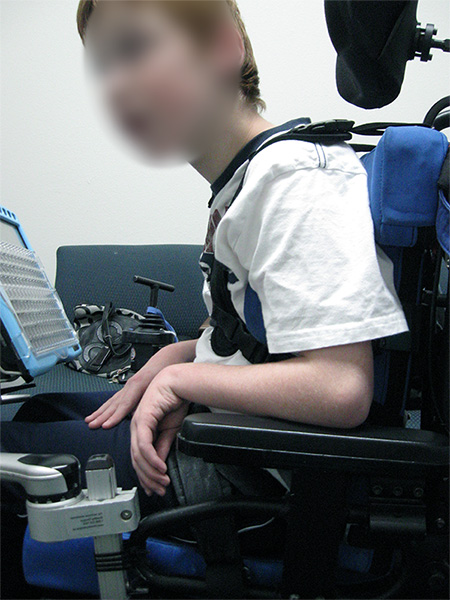Dynamic Seating Provides Anterior Movement Of The Trunk – Part 2
 Michelle L. Lange, OTR/L, ABDA, ATP/SMS
Michelle L. Lange, OTR/L, ABDA, ATP/SMS
Updated 9/21/2022
Our last blog addressed dynamic seating used to provide posterior movement of the trunk. Anterior movement of the trunk can also be facilitated.
Sometimes it's OK to Lean: Anterior Movement Of The Trunk
In this scenario, the back typically remains in one position (static) and the anterior trunk support is dynamic. The client can then lean forward to reach something, and is assisted back by the energy built-up in the dynamic anterior trunk support (chest strap, shoulder straps, or vest). The trunk support material and/or mounting straps are usually elastic in nature. Some clients will tend to "hang" on dynamic anterior trunk supports if the material is inadequate to assist with return to upright. It is recommended that you trial this intervention with an individual client prior to a final recommendation to ensure dynamic anterior trunk support will work as expected.
Dynamic anterior trunk supports work well for clients who are able to volitionally lean forward, but who require some assistance to return to upright. Leaning forward may extend functional reach, provide pressure relief or just be used to provide movement (for comfort or for the sake of movement).
Troubleshooting Forward Hanging
If a client tends to hang on a dynamic anterior trunk support, check their overall positioning to ensure that the seating system is optimizing trunk control. For example, the seat to back angle may be too closed, as in the photo of this young man. These adjustments may help the client to successfully use this dynamic seating component.

Let’s keep the conversation going! What is your experience when using dynamic anterior trunk supports? Just leave a comment, I’d love to hear from you!